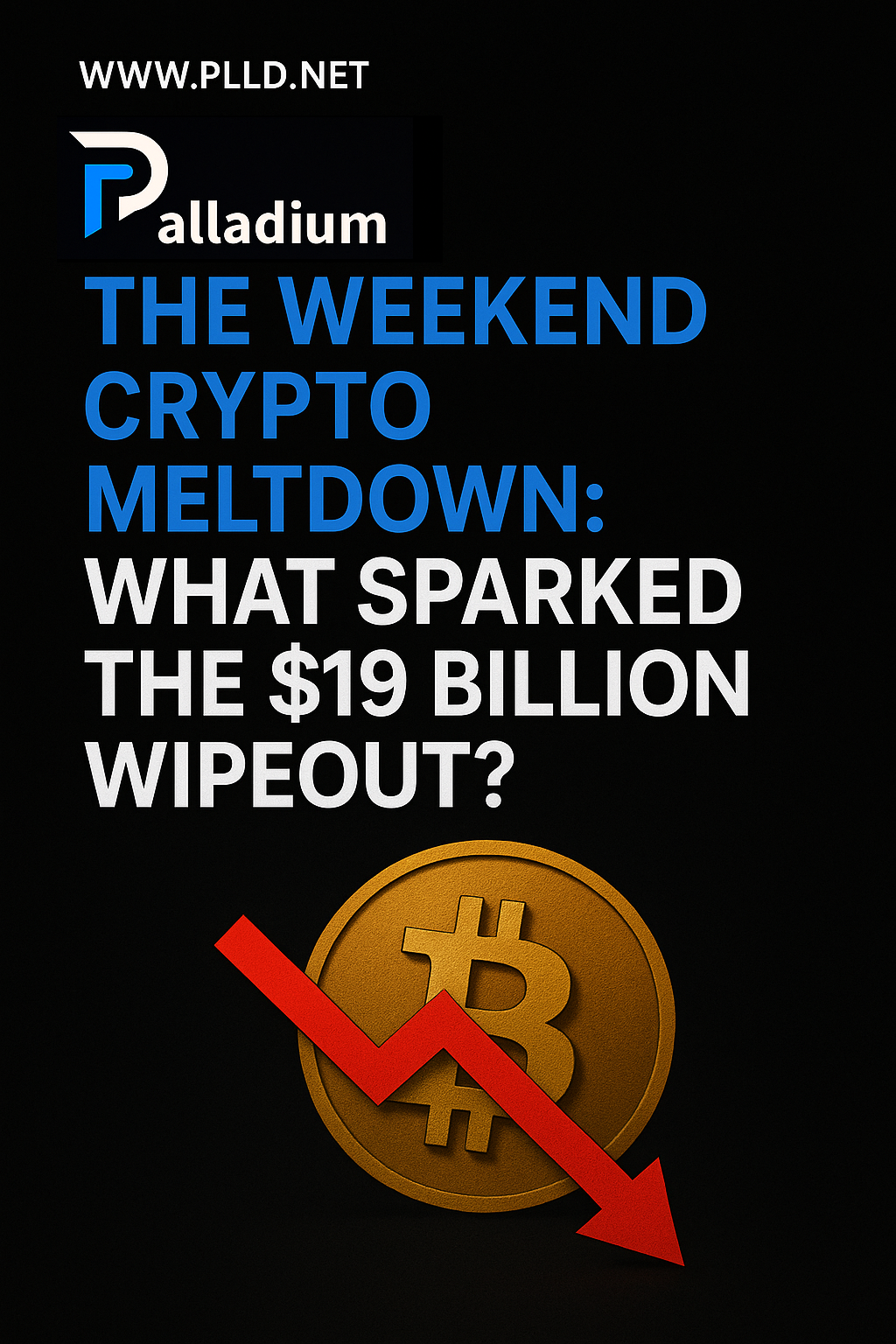Shockwaves From the Top
Bitcoin, which had been hovering comfortably above $120,000, tumbled sharply to the $110,000 range, dragging the entire market with it. Ethereum slid below $2,700, while mid-cap altcoins saw double-digit losses across the board.
This wasn’t a slow bleed — it was a cascade. Once prices broke key technical levels, stop-losses and liquidation engines on major exchanges kicked in, amplifying the fall. Within hours, billions in futures contracts were wiped out, erasing weeks of bullish momentum.
The Trigger: Tariff Turbulence and Macro Fear
The spark that lit the fire came from outside the crypto world. Late last week, the U.S. government announced 100 % tariffs on Chinese tech imports, reigniting global trade tension fears. Markets reacted instantly — stocks wobbled, bond yields jumped, and “risk-on” assets like crypto were hit hardest.
Traders who had piled into highly leveraged long positions were suddenly forced to unwind, fueling a domino effect of margin calls and panic selling. It was a textbook case of how macroeconomic shocks can ripple through decentralized markets at lightning speed.
Leverage Meets Liquidity
Leverage has always been a double-edged sword in crypto. It amplifies gains on the way up — and magnifies pain on the way down.
During this crash, the problem wasn’t just overconfidence; it was timing. Weekend trading typically comes with thinner liquidity, meaning fewer buyers to absorb massive sell pressure.
So when the first liquidations hit, prices dropped harder and faster than expected. That, in turn, triggered even more forced sales — a self-feeding spiral that only stopped once the weakest hands were washed out.
The Human Cost
Beyond charts and numbers, the volatility took a real-world toll. Reports surfaced of a Ukrainian crypto investor found dead amid the market chaos — a tragic reminder that financial stress in extreme markets can have devastating consequences.
Crypto is global and digital, but its impacts are deeply human.
Sentiment Shock: From Euphoria to Fear
Just a week ago, the mood across social media was euphoric. Bitcoin memes flooded timelines, “next leg up” predictions were everywhere, and traders were celebrating new highs. That optimism vanished overnight.
Now, the Fear & Greed Index has flipped hard toward fear, and analysts are talking about “reset” levels rather than price discovery. Yet, ironically, that may be exactly what the market needs — a cooling phase to shake out excess leverage and reset expectations.
Institutions Stay Cautious — But Not Out
Interestingly, institutional players don’t seem to be running for the exits. ETF inflows slowed but didn’t reverse, and major funds appear to be treating this as a healthy correction, not a collapse.
For long-term investors, the fundamentals — tightening Bitcoin supply, continued adoption, and growing regulatory clarity — haven’t changed. What’s shifting is risk appetite, not conviction.
A Market Built on Resilience
Crypto has survived worse: China bans, exchange collapses, bear markets, and global recessions. Each time, it’s come back stronger — leaner, more efficient, and more liquid.
This weekend’s crash may be painful, but it also clears the path for renewed growth. Excessive leverage is gone, weak hands are out, and valuation froth has thinned.
If history repeats, these shakeouts often set the foundation for the next leg up.
Lessons From the Fall
Leverage kills — even the best trade idea can implode when overextended.
Weekends amplify volatility — low liquidity means fast, deep moves.
Macro matters — crypto doesn’t exist in a vacuum; it dances to global economic tunes.
Sentiment cycles faster than prices — fear and greed trade places faster than fundamentals shift.
The Road Ahead
As of Monday morning, Bitcoin has already clawed back part of its losses, stabilizing above $114,000. Some traders see this as a “buy-the-dip” opportunity, while others warn that volatility is far from over.
Whether this marks the start of a deeper correction or just a violent reset, one thing is certain: crypto’s wild heart is still beating. The same forces that fuel its booms — emotion, innovation, and belief — are what carry it through its crashes.
And after this weekend’s storm, one truth remains unchanged: the crypto market never sleeps, and it never stops testing those who dare to play.
